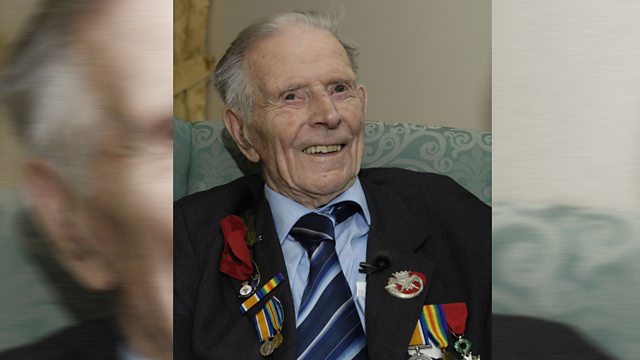Bath, Somerset: Veteran of WW1 Trenches
The man who kept secrets of the trenches for over 80 years
Harry Patch has become the standard bearer for a generation. His image is the one now conjured up when people talk about Tommies, trenches and the terror of the Western Front. It’s a remarkable legacy but it’s worth pointing out that’s Harry’s fame is accidental; borne purely of his great longevity and the fact that in his final years he was encouraged to share his memories. If the German shell which injured him so badly in the autumn of 1917 had done the job it was intended to do, someone else would have been ‘the last veteran’.
Henry John Patch was born in Combe Down near Bath in 1898, the youngest of three brothers and went to the village Primary School. He was a sporty lad, a keen rower and played rugby in the school team. He was in the choir and like so many small boys of his era, he dreamed of being an engine driver when he left school. In actual fact he followed his father in to the building trade and became an apprentice plumber. By his own admission, Patch was a reluctant soldier and waited to be conscripted into the army in 1917.
Trained as a machine gunner with the Duke of Cornwall’s Light Infantry, on his 19th birthday he found himself in the trenches at Passchendaele. On 22 September 1917, a German shell exploded above his Lewis Gun team, killing three of his friends. Amid the blood and the mayhem, a piece of shrapnel cut into Harry’s groin. The searing pain would have been enough to tell him that his fighting days were over.
For someone whose war experiences have been so extensively examined, Harry’s time at the front was relatively short. He arrived in France during the second week of June 1917 and left, injured, two days before Christmas that year. In later life he remarked that in all that time he never had a bath: “I never had any clean clothes. And when we got to Rouen on the way home they took every stitch of clothing off us: vest, shirt, pants, everything and they burnt it all. It was the only way to get rid of the lice.”
He recovered from his injuries, eventually returned to work as a plumber and during World War Two he served as a fireman in Bath, tackling the aftermath of the German blitz on the city.
Harry had insisted that when he died he shouldn’t have a state funeral. Appropriately for a man who became an ambassador for peace, when the day came in 2009, there were no gun salutes at his funeral in Wells. Instead the Belgian, French and German governments were represented inside the cathedral and soldiers from those three countries acted as pall bearers alongside serving members of the 1st Battalion the Rifles, the modern-day equivalent of Harry’s old regiment.
While in Combe Down, at the primary school where he spent his formative years, Harry is remembered with pride and a sense of poignancy. The very young learning the lessons of peace and reconciliation from the story of a long-lived survivor.
Location: Combe Down Primary School, Church Road, Combe Down, Bath BA2 5JQ
Image: Harry Patch wearing some of his many medals and honours
Duration:
This clip is from
Featured in...
![]()
�鶹�� Somerset—World War One At Home
Places in Somerset that tell a story of World War One
More clips from World War One At Home
-
![]()
The loss of HMY Iolaire
Duration: 18:52
-
![]()
Scotland, Slamannan and the Argylls
Duration: 07:55
-
![]()
Scotland Museum of Edinburgh mourning dress
Duration: 06:17
-
![]()
Scotland Montrose 'GI Brides'
Duration: 06:41







